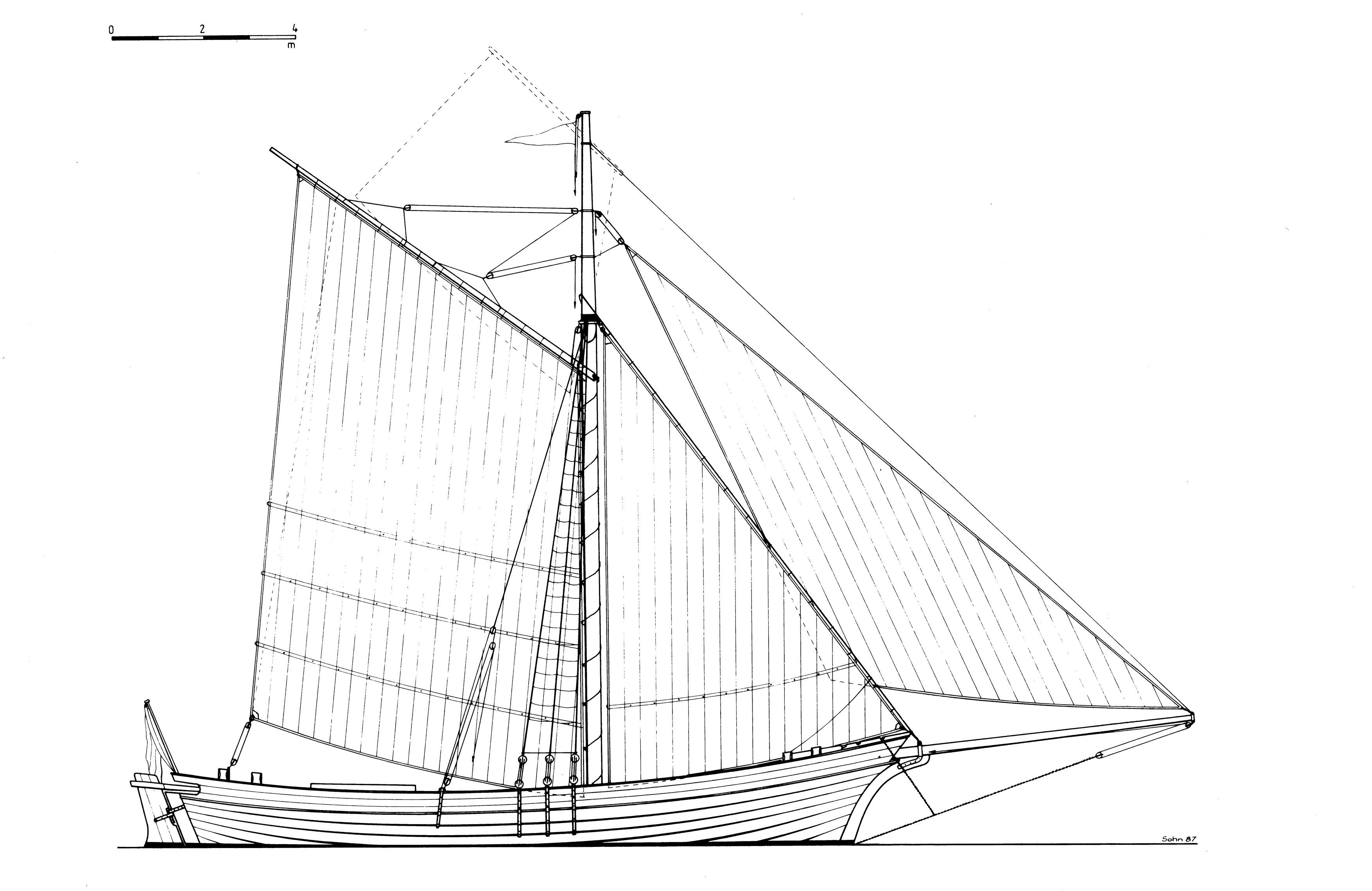Haffboot on:
[Wikipedia]
[Google]
[Amazon]

 A ''Haffboot'' (plural: ''Haffboote'') is the collective term for a type of sailing boat that is used as a fishing or cargo boat on the shallow Baltic Sea coast, in the
A ''Haffboot'' (plural: ''Haffboote'') is the collective term for a type of sailing boat that is used as a fishing or cargo boat on the shallow Baltic Sea coast, in the

 A ''Haffboot'' (plural: ''Haffboote'') is the collective term for a type of sailing boat that is used as a fishing or cargo boat on the shallow Baltic Sea coast, in the
A ''Haffboot'' (plural: ''Haffboote'') is the collective term for a type of sailing boat that is used as a fishing or cargo boat on the shallow Baltic Sea coast, in the Bay of Greifswald
The Bay of GreifswaldStettin Lagoon and their neighbouring waterbodies until the 20th century. Using similar or identical designs for the
Model photos of a Quatze
Sailing ships Types of fishing vessels
ship's hull
A hull is the watertight body of a ship, boat, or flying boat. The hull may open at the top (such as a dinghy), or it may be fully or partially covered with a deck. Atop the deck may be a deckhouse and other superstructures, such as a funnel, ...
and its cargo hold, the fishing boats were built with wet or dry cargo holds. The flushed cargo hold, often called a ''Bünn'' in the Baltic Sea region, is not sealed hermetically from the water, but is filled with surrounding water. Small holes in the outer skin of the boat enable an exchange of water between the ''bünn'' and the outside water. The fish that are caught can thus be transported live. In a traditional fishing boat without cooling units, this allowed the time delay between catching the fish and landing them to be extended.
Around the turn of the 19th and 20th centuries, ''haffboote'' were active on the Neuwarper See
The Neuwarper See, also Warper See* Johannes Hinz: ''Warper See''. In: Johannes Hinz: ''Pommern. Lexikon.'' Bechtermünz Verlag, Augsburg 1996, , p. 337. ( pl, Jezioro Nowowarpieńskie), is a bay on the southern shore of the Szczecin Lagoon. It ...
and in the lower Oder
The Oder ( , ; Czech, Lower Sorbian and ; ) is a river in Central Europe. It is Poland's second-longest river in total length and third-longest within its borders after the Vistula and Warta. The Oder rises in the Czech Republic and flows thr ...
delta. They were built as shallow-draughted, broad-beamed clinker built vessels at small boatyard
A shipyard, also called a dockyard or boatyard, is a place where ships are built and repaired. These can be yachts, military vessels, cruise liners or other cargo or passenger ships. Dockyards are sometimes more associated with maintenance a ...
s in Neuwarp (now Nowe Warpno), Anklam or Ueckermünde.Wolfgang Rudolph: ''Segelboote der deutschen Ostseeküste.'' Akademieverlag Berlin 1969; Vol. 53
Types
The following types were classified as ''haffboote'' on the Stettin Lagoon: the ''zeeskahn'', once the largest of the ''haffboote''. It was 22 metres long, wide beamed and had a shallow draught. Its crew usually consisted of 3 men. ''Zeeskähne'' were usually under way for 48 hours and fished at night. Other types were the ''tuckerkahn'', the '' polte'', the '' zolle'' and the '' quatze''. The haul was handed over to fish dealers (''Quatzner''). They went out regularly to the fishing ''zeeskähne'' and ''tuckerkähne'' in order to bring in the catch and take it to the markets. At the same time they supplied the fishermen with provisions and news.See also
* KurenkahnReferences
Literature
* Wolfgang Rudolph: ''Die Insel der Schiffer.'' Rostock, 2000, {{ISBN, 3-356-00855-2. * Alfred Dudszus, Ernest Henriot, Friedrich Krumrey: ''Das große Schiffstypenbuch. Schiffe–Boote–Flöße unter Riemen und Segel. Historische Schiffs- und Bootsfunde. Berühmte Segelschiffe.'' transpress, Berlin, 1983.External links
Model photos of a Quatze
Sailing ships Types of fishing vessels